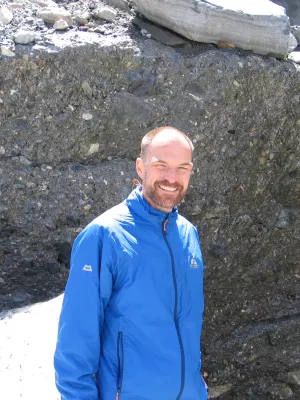
Sven Lukas
Universitetslektor

Implications of a rapidly thinning ice margin for annual moraine formation at Gornergletscher, Switzerland
Författare
Summary, in English
Ice-marginal moraines are widely used as indicators of palaeoclimate in mountainous regions, yet the genetic processes of their formation remain incompletely understood. Here, we present new data on the geomorphology and sedimentology of annually formed moraine ridges in the foreland of Gornergletscher, Switzerland, with the aim of reconstructing the processes of their formation, assessing their preservation potential over longer time scales, and evaluating the climatic significance of these terrestrial archives. A specific focus is set on moraine ridges that formed between 2007 and 2019, a period when the glacier front was subject to pronounced retreat and thinning. Four dominant mechanisms of moraine formation could be identified to be operating across the foreland: (I) freeze-on of submarginal sediments to the advancing glacier sole; (II) the formation of ice-cored moraines controlled by the emergence of englacial debris bands on the glacier surface; (III) efficient bulldozing and deformation of pre-existing fluvial or lacustrine sediments by the advancing glacier; and (IV) inefficient bulldozing of these deposits with the incorporation of dead ice into moraine bodies. The spatial distribution of these processes in the foreland depends on a set of climatological, topographical, and glaciological boundary conditions, the most important of which appears to be the slope of the ice margin. The largest and most well-defined moraines can be genetically linked to efficient bulldozing operating along a sufficiently steep glacier front. These moraines frequently form parts of longer, continuous chains and can be used to calculate frontal retreat rates of the glacier through time. Comparing this record of ice retreat with climatic data reveals a statistically significant correlation to annual air temperature anomalies, which is especially strong for the period between 2005 and 2017. Longer series of annual moraines may therefore provide important information about the climatic drivers that govern glacier retreat. However, dead ice is often found to be incorporated into moraine bodies along the present, thin ice margin. Upon melt-out of the ice, the morphologies and internal structures of these moraines are strongly altered, thus limiting their preservation potential over longer timescales. In such a scenario, the morphological record remaining in a deglaciated landscape may be incomplete or entirely lacking. Therefore, we conclude that great care must be taken when interpreting moraine sequences in a palaeoclimatic context.
Avdelning/ar
- Kvartärgeologi
- BECC: Biodiversity and Ecosystem services in a Changing Climate
Publiceringsår
2023
Språk
Engelska
Publikation/Tidskrift/Serie
Quaternary Science Reviews
Volym
308
Länkar
Dokumenttyp
Artikel i tidskrift
Förlag
Elsevier
Ämne
- Geology
Nyckelord
- Alpine glaciers
- Climate change
- Glacial geomorphology
- Glacial sedimentology
- Glacier retreat
- Recessional moraines
- Swiss Alps
Status
Published
ISBN/ISSN/Övrigt
- ISSN: 0277-3791

